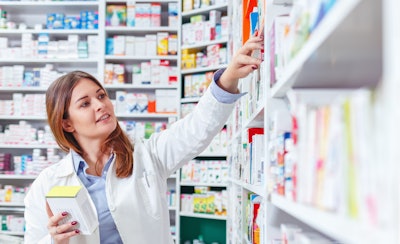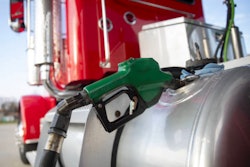
The delivery system for pharmaceutical and medical products, known as the cold chain, has become more important than ever in the post-pandemic era. Because many rely on vaccinations and boosters to remain healthy and protected, as well as home deliveries to reduce human interaction and avoid long pharmacy lines, a properly functioning, safe and unbroken cold chain is essential.
The transfer process of medications, vaccines and temperature-regulated products in general is nearing its busiest time of year, with the holidays rapidly approaching and cold and flu season in full swing. Not only must distributors keep up with the increasing demands from the immuno-compromised and growing sick population, but they also need to expedite the entirety of the process due to the seasonal demands.
How are distributors keeping up while maintaining efficacy through the last mile? The implementation of temperature monitoring devices helps identify if the cold chain was maintained.
With the busy shipping season top of mind, distributors are turning to temperature monitoring with devices like recorders, indicators and thermometers to strengthen the overall process. Temperature monitoring improves the last mile delivery experience by allowing manufacturers to deter mishandling, detect any issues that occur and diagnose if a shipment is approved to continue its journey or needs to be replaced. While the benefits of temperature monitoring are extensive, consider the five below as most substantial.
1. Improves efficiency
Time is of the essence when it comes to vaccines, medications and other related products, so the ability to streamline the distribution of refrigerated cargo with arrival and departure notifications speeds up the entire process. Once the cargo arrives at each checkpoint, the desired temperature-monitoring device will have an update readily available and will indicate if a damaging temperature change occurred during transfer.
2. Creates a safer, more reliable cold chain
The transportation and delivery process for both shippers and consumers can be considered high stakes when ensuring a product’s efficacy. When the proper temperature-monitoring technology is implemented and communicated to all partners in the chain, the number of shipments that undergo temperature deviations decreases, meaning more shipments can travel through the cold chain safely. Reliability is of the utmost importance for cold chain products. If the temperature is not within the proper range, it can affect the product’s effectiveness and even worse, make a product unusable all together.
3. Reduces product waste and subsequent damage
Many errors can occur along the cold chain before the end user receives their package. Everything from freezers breaking to unexpected delays, warm warehouses and packages left sitting on doorsteps for too long can impact a product’s ideal temperature. Breaks in the cold chain result in more than 68 million vaccines being wasted every year. Implementing a temperature-monitoring device can prevent the wastage of expensive commodities by monitoring at any stage throughout the transfer process. With many cost-effective, color-changing solutions on the market, distribution can be improved through providing a visual indication when the temperature falls outside the ideal temperature range. Solutions, which can be added to entire shipments or mounted directly onto the product, can also serve as a visual warning, notifying handlers that a monitoring program is in place and products should be handled properly and well-maintained. This knowledge gives distributors the opportunity to make quick decisions before proceeding with a compromised shipment.
4. Prevents product delays
Product delays can be detrimental to people who rely on the cold chain for their regular medications but also to immunocompromised individuals relying on vaccines and boosters. Temperature monitoring can lessen the number of delays by allowing distributors the opportunity to make quick decisions before proceeding with a shipment. For example, devices that indicate how far out of the set temperature threshold a product’s temperature went, and for how long, communicates to handlers if a product needs to be discarded or simply used first. All of these temperature-monitoring device features ultimately contribute to getting medications and vaccines to consumers in a quick and efficient matter, guaranteeing satisfaction.
5. Solving some of the cold chain’s biggest challenges
Since cold chain rules and regulations are constantly evolving, so is the manner in which temperature is monitored. Cold chain partners have worked closely with temperature-monitoring device manufacturers to tackle the Drug Supply Chain Security Act (DSCSA), which requires the tracking of prescription products to protect consumers from receiving counterfeit, contaminated, stolen or compromised products through the pharmaceutical cold chain. To accommodate this policy, most, if not all, temperature-monitoring devices come with tracking technology, which helps determine product conditions from beginning all the way through the last mile.
Improving the supply chain is an ongoing process, but temperature monitoring has been proven to be increasingly valuable for all handlers in the industry. A safer and transparent supply chain is possible with the various devices on the market currently.




















